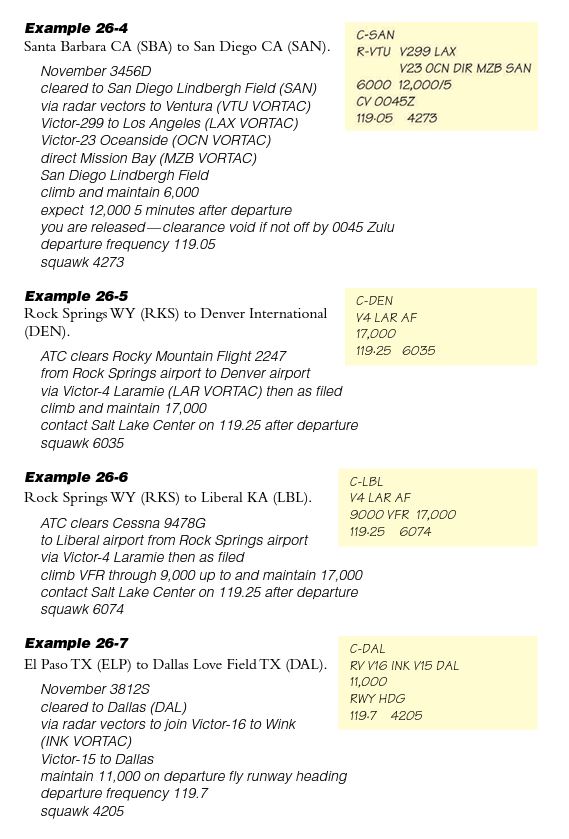Last week, I promised you we would begin to expand upon the topic of IFR, particularly clearances. A clearance is simply an authorization from ATC to fly to an airport or fix via an assigned route and altitude. Any operation in controlled airspace under IFR requires the pilot to first obtain a clearance to do so.
The process of obtaining a clearance starts first with the pilot filling out an IFR flight plan. An IFR flight plan is identical to that of a VFR in that it will contain aircraft and route information. ATC will issue a clearance based off the information from the IFR flight plan. It’s important to understand though that the clearance may not be the exact route or altitude that you selected when filling out your IFR flight plan. ATC priority is traffic flow and aircraft separation so you may note changes in your clearance from what you originally filled.
Your clearance will typically be issued by ground control or clearance delivery for airports that have that frequency available. Clearance delivery is simply a control tower position responsible for transmitting departure clearances to IFR flights. Clearances can often be drawn out and long so having a CD frequency prevents an abundance of traffic on ground frequency.
An IFR clearance will contain in this order: your identification, the clearance limit (usually your destination airport), the departure procedure, altitudes, any holding instructions, any other special information, radio frequency and transponder code information. Because clearances are always issued in the same format a good memory aid to help you remember is CRAFT:
- Clearance limit
- Route (including DP, if any)
- Altitude
- Frequency
- Transponder code
For example. ATC:
Mooney 3-7-3-Foxtrot cleared to the John Wayne airport;
After departure turn left heading 270, radar vectors mission bay VOR, as filled;
Climb and maintain 2,000 expect 4,000 one zero minutes after departure;
Departure frequency 119.2;
Squawk 4528
The above issued clearance from ATC follows the memory aid CRAFT. Now obviously that’s a lot of text to write down so it’s important to develop your own short hand that makes sense to you. You already know the order that the information is going to be coming at you so from there you can kind of fill in the blanks. This is how I would personally write down the above clearance.
SNA
TL 270, RV MZB, AF
2,000 / 4,000-10
119.2
4528
As you can see, I put each CRAFT item on a new line. Some of my shorthand includes TL for “turn left” or TR for “turn right”, other people may just use an arrow. You also see RV for “radar vectors” and AF for “as filled”. My initial altitude was 2,000, eventually climbing to 4,000 in ten minutes, so I noted that with a 10 after the second altitude. Everybody has their own style, find one that works for you and stick with it, there’s no right or wrong way.
Now once your clearance is read to you by ATC you must read it back and do so in the identical order as it was given. This is done to make sure both parties are on the same page and the clearance was properly read and read back from both ATC and PIC.
Following the read back from the pilot-in-command that clearance has been accepted and ATC expects you to follow it. You may not deviate from that issued clearance unless an amended clearance is obtained, an emergency situation arises, or in response to a traffic and collision avoidance system resolution advisory.
For me this is fun stuff, I enjoy reading back clearances and interacting with ATC but it takes some getting used to at first. There are several live ATC feeds out there that you can listen in on. Check out www.liveatc.net, find a clearance deliver frequency and listen to the clearances. Practice your short hand and read back skills, you might even pick up a few tips from listening to other pilots, overall it’s a great way to gain some experience without paying for AVGAS.
Here are some additional examples of clearances and short hand from the Pilot’s Manual Volume 3: Instrument Flying (PM-3).





